Healing herbs and essential oils
Medical plants can help to treat respiratory infections like the flu, colds and bronchitis. Essential oils (listed in the box alphabetically) are made from highly concentrated essences of plants that have similar health benefits as herbal remedies but are used in aromatherapy.
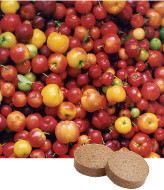
+ The following are effective medical plants and herbal remedies to fight respiratory ailments. Some plants may be easier to find than others depending on where the plants are cultivated. You can find some as fresh or dried plants, and others in liquid form, tablets or powder.
NOTE
You should always consult your physician before starting any herbal treatment.
ANTI-FLU INFUSION
Mix 2 tablespoons of acerola with 1 tablespoon of orange peel. Mix 2 teaspoons of this mixture with 1 cup of boiling water. Let it steep, strain and drink a cup ½ hour before eating lunch.

Acerola or Barbados cherry
(Malpighia glabra)
• Parts used. The fruit is similar to the common cherry because of its size and color. The fruit is harvested in the summer and eaten fresh. The fruit can also be consumed as capsules, gels or juices.
• Every ½ cup of acerola pulp contains between ½ to 1 teaspoon of ascorbic acid or vitamin C (50 to 100 times more than citrus fruit).
• The plant is native to the Yucatan, Mexico. Today, it is cultivated in sub-tropical areas throughout the world, mostly in Brazil. It has a sweet and sour taste.
• It helps to prevent and treat common colds, especially for children and women who are pregnant or breast-feeding. Vitamin C in elevated doses (as with acerola) can help to cure the flu, colds and pulmonary infections.
• Recommended intake for a 1 year old is 1 fruit per day; 10 years of age and older, 2 fruits per day.
• Warning. Vitamin C is not recommended for kidney stone sufferers or for those undergoing chemotherapy.
Avenca
(Adiantum capillus-veneris)
• Parts used. The leaves are used to prepare in gels, teas and infusions. Avenca is a fern widely used in holistic medicine that grows in moist, covered areas.
• Native to Europe and Asia, it is widely cultivated in South America.
• It helps as an anti-flu and anti-cold remedy. Good for fighting coughs, bronchitis, sore throats and chronic running nose.
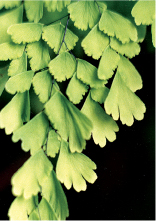
ESSENTIAL OILS FROM A TO Z
BASIL
Basil carries special antiviral, antiseptic, anti-spasmodic and antibacterial properties. When used on the body it can purify and detoxify the skin. It's recommended diluting basil oil when using it to massage.
Safety. Prolonged use can irritate the skin.
BENJUI
Anti-flu and anti-septic remedy from the Sumatra region. The resin from the plant's gum is used to make an essential oil. It is used in ointments, lotions and creams. Benjui helps to soothe sore throats and is an ideal remedy for children. It's recommended applying a few drops to the affected area.
WARNING
Essential oils are for external use only, they should never be ingested. Keep stored away from children and keep away from your eyes.
FOR CHILDREN WITH COUGHS
To relieve coughs in children, boil a handful of avenca leaves until the water becomes paste like.
Drain and add 2 cups of sugar; allowing the drained mixture to boil for a few more minutes.
Take 2 to 3 spoonfuls a day. Avenca can also be prepared as an infusion and drunk through a filtered straw.
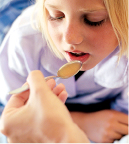
AROMATHERAPY
Although modern aromatherapy is thought of as a technique to care for the body with pleasant smells, this ancient healing art uses essential oils for their therapeutic properties. Essential oils are extracted from plants, flowers, trees, and roots and processed by grinding, distillation, or extracted with a dissolvent. Essential oils can be diluted and mixed with other vegetable-based oils because they tend to be costly and very concentrated.
Some uses for essential oils: rub into skin during massages, put a few drops when taking a bath and add to vapors for inhaling. Essential oils should be ingested only under strict medical supervision. Using oils in massage therapy is the most common use because it awakens the sense of smell, softens the skin and makes the massage feel even more relaxing.
Essential oils are good for use in treating respiratory ailments (see Essential oils from A to Z box, on page 31).
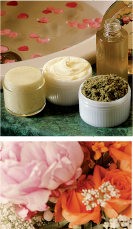
Ephedra or Ma Huang
(Ephedra sinica)
• Parts used. The stems are used to make powders and tinctures. In India ephedra is used as the principle component in soma, a potent tonic. Ephedra's main active medicinal ingredient is the alkaloid ephedrine, which is used to treat asthma.
• The Chinese have used ephedra medicinally for over 5,000 years as a natural remedy to treat serious illnesses, including asthma and lung and bronchial constriction.
• Ephedra is good for moving mucus and fluids, fighting the chills, headaches, aches and pains and coughs.
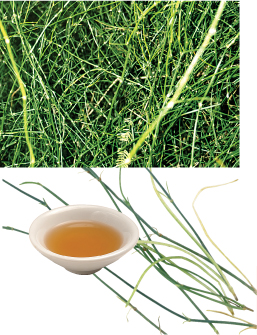
ESSENTIAL OILS FROM A TO Z
BERGAMOT
Antiviral. Bergamot is a refreshing oil with a citric aroma that helps to cure respiratory infections and pulmonary ailments.
Safety. Because it can increase the photosensitivity of the skin, it's best to avoid direct sunlight after using bergamot oil. It's used in baths, massages and vapors.
CAMOMILE
Hypoallergenic and anti-inflammatory remedy good for treating asthma. This essential oil can be used in massages and added to vapors. Add a spoonful into a bowl filled with boiling water and inhale if you are having an asthma attack, always accompanied by medical treatment.
Safety. Camomile should not be used during pregnancy or used above the recommended doses.
• Safety. Ephedra should not be used with symptoms of high blood pressure or if you are taking other stimulants or anti-depressive drugs. In some nations, law controls the maximum dosage. Efedrine is also included in a list of drugs banned in professional sports.
Echinacea
(Echinacea purpurea)
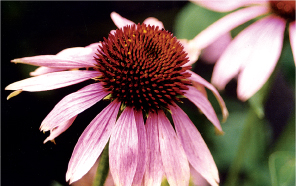
• Parts used. The root and flowers are used. Echinacea powder and tincture are made from the plant's roots. Relatively recently, the flowers began to be used to make capsules.
NATURAL COUGH SYRUP
Take 1/2 spoonful of echinacea tincture with water 2 or 3 times a day to relieve a dry chest cough and bronchitis.
• Echinacea is a wild flower native to North America. Native Americans used the plant for a variety of conditions, including high fevers and venomous bites. The colonists adopted echinacea as a home remedy against colds and flu. In the past decades its use has expanded throughout the globe for its antiviral and antibacterial properties.
• It can be administered to children for sore throats. Add 2 teaspoons of root tincture to a glass of tepid water and gargle.
• Safety (especially for taking orally as a tincture or a concoction). Large doses can cause nausea and dizziness. It shouldn't be used if you have autoimmune illnesses.

ESSENTIAL OILS FROM A TO Z
CEDAR
Calming and antiseptic, which is useful for treating respiratory illnesses. It was one of the first oils to be used as a healing remedy; the ancient Egyptians used cedar oil to cure throat ailments. Native Americans have for centuries considered cedar trees as sacred for their healing properties.
CINNAMON
Anti-fever. Cinnamon has a warm, sweet and spicy aroma, which is a good remedy for high fevers accompanied by chills. However, it's best to use cinnamon oil in low concentrates. Take care when using the oil made from the tree's leaves. The bark is used exclusively for the skin.
Eucalyptus
(Eucalyptus globulus)
• Parts used. The leaves are cultivated all year long. They can be used to make infusions and also for capsules and pills. Infusions are recommended for children (you can sweeten them with honey).
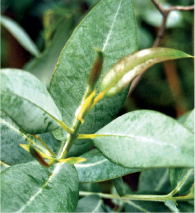
• Eucalyptus is native to Australia, where aboriginal natives used the plant as a remedy against fever. During the 14th century the plant was introduced to Europe and today it is grown across America and Europe.
• This remedy fights against the flu virus and other bacteriae. It also has antiseptic properties because of its high cineol content. The leaves are ground to make capsules that are a remedy for respiratory infections and bronchitis.
KIDS SUFFERING FROM A COLD
To relieve nasal congestion, place I drop of lavender oil and a drop of eucalyptus oil on a handkerchief and place under the pillow for a night.
FIGHT BRONCHITIS
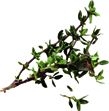
Mix 5 drops of eucalyptus, 5 of thyme with 2 spoonfuls of olive or sunflower oil. Rub this mixture into the chest or back, 2 times a day.
Safety. Do not use thyme essential oil during pregnancy.

VAPOR FOR PULMONARY AILMENTS
Place 10 drops of eucalyptus oil in a bowl with water at the point of boiling.
Cover the head and take deep breaths with the vapor for 15 minutes.
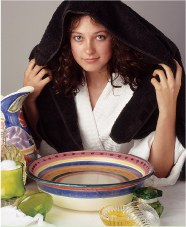
Coltsfoot
(Tussilago farfara)
• Parts used. The leaves and flowers are cultivated at the end of spring.
• Native to central Europe, it is cultivated as a medicinal plant.
• Coltsfoot may be used in chronic or acute bronchitis, irritating coughs, whooping coughs and asthma. Its soothing expectorant action gives coltsfoot a role in most respiratory conditions.
• Warning. It's best to avoid coltsfoot during pregnancy and breast-feeding. It shouldn't be used as a prolonged treatment; or for those who have liver troubles.
TO CONTROL YOUR COUGH
To soothe an irritating cough, use 2 tablespoons coltsfoot leaves or flowers for every 4 cups of water. Boil for 5 minutes and strain to make a tea. Drink 3 cups a day.

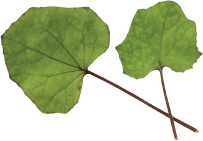
ESSENTIAL OILS FROM A TO Z
CYPRUS
Antispasmodic. When used in a vapor, this oil helps to soothe respiratory problems. It is anti-septic, refreshing and soothing. It's used for snoring and sore throat. It's inhaled for sore throats and convulsive coughs. It's used in cases of epilepsy.
EUCALYPTUS
A powerful antiseptic that helps respiratory infections and asthma. It helps to decongest stuffed up noses and to relieve sore throats and coughs. It's used in massages, scrubbings, compresses and vapor treatment. It's a powerful oil, so it should be used in lower concentration, especially when used on children. It mixes well with lavender.
Mullein
(Verbascum thapsus)
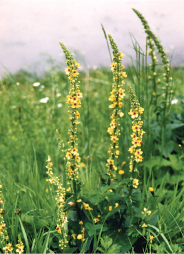
• Parts used. The flowers. The bright yellow flowers are used fresh, dried or ground to make infusions. The fruit is also used to fight respiratory problems for its soothing emollient properties.
• The plant can grow up to two meters high. Although its origin is unknown, it was used in Mexico before the Spanish conquest.
• The plant is an excellent remedy for soothing and calming the bronchial tubes, and to relieve continual and irritating coughs.
• Warning. Mullein shouldn't be used during pregnancy and breastfeeding.

OCCASIONAL SORE THROAT
Take a handful of fresh English ivy leaves, wash them and let them dry. Next, grind them with a mortar to extract the plant's liquid. Place 1 tablespoon of the zest in 2 cups of water and let rest for 10 minutes. Drink this mixture (3 cups per day) sweetened with honey. English ivy blends well with elderberry flowers and with plantain: use 2 parts English ivy for 1 part of the other two herbs.

SOAK IN AN ANTI-COLD BATH
Soak in a bath with 5 drops of fennel oil to help relieve a persistent congestion.
TO RELIEVE EXCESS MUCUS
Mix 1 teaspoon of essential oil of fennel with 1 tablespoon of neutral oil as an ointment to rub on the chest.
English Ivy
(Hedera helyx)
• Parts used. Fresh leaves and dried leaves and flowers, to grind into powder, to make tonics and infusions.
• English ivy is native to Central Europe and was used widely in the Middle Ages.
• English ivy has soothing, antiseptic and astringent properties; it helps to dry up mucus in the bronchial tubes and to clear up stuffed up sinuses. Taken as a tonic or infusion, it's good for sore throats, stuffy noses and upper respiratory ailments. It also helps to relieve sinus infections.
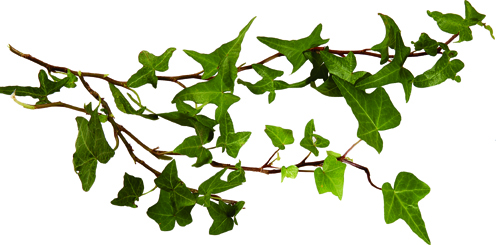
ESSENTIAL OILS FROM A TO Z
EUFRASIA
Antitusive and anti-cold remedy, it's also known for its antiseptic properties. The parts of the plant growing above the ground are used to make vapors and ointments for massages.
Safety. It shouldn't be used for children under 2 years old.
FENNEL
This essential oil is soothing and it also has antiseptic properties. It's used in massages, compresses and vapor treatment to clear up bronchial mucus. It can be blended with marsh mallow and thyme.
Safety. This oil shouldn't be used for prolonged periods without alternating between other oils. It shouldn't be used on pregnant women or those who suffer from epilepsy.
Hyssop
(Hysopus officinalis)
• Parts used.
The stems and flowers are used in tinctures and capsules as a remedy to sooth bronchitis. It has a spicy aroma that blends well with thyme and basil.
• This shrub is native to the Mediterranean, but it is also grown in Central Europe and Western Asia.
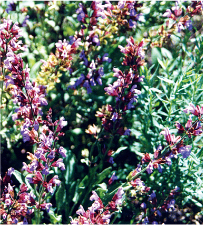
• Hyssop's bitter and spicy taste has a tonic and stimulating effect on the respiratory system. It's also good for soothing a sore throat and persistent cough. This remedy helps to stimulate sweating if you have the chills or flu. It blends well with liquorice (glycyrhiza glabra) to relieve bronchitis and a chronic cough.
• Warning. Avoid use during pregnancy and for those with epilepsy. You should never exceed the recommended dose, because this essential oil can provoke seizures.
ESSENTIAL OILS FOR RESPIRATORY PROBLEMS
Mix 1 drop of myrrh, 1 drop lavender and 1 drop of orange in 2 tablespoons of neutral oil or cream. You can use this soothing ointment to rub on the chest or back.
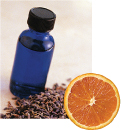
FOR EARACHES
Ideal remedy for children
Place 2 drops of lavender oil on cotton balls and place them in the ears until the pain goes away
Ginger
(Zingiber officinalis)
• Parts used. The roots are used fresh or dehydrated.
• This zesty tasting root, native to India and China, is currently grown throughout the world.
• Ginger is a good anti-flu remedy because it has 12 antiviral components. It helps to relieve symptoms that accompany colds, fevers and aches. It also soothes cough and helps you to rest. Also, it's an excellent emetic. Ginger can be taken in a tea, or in infusions or capsules that are made with the root.
• Warning. It's not recommended for prolonged use during pregnancy. Do not use this remedy if you are taking blood-clotting drugs.
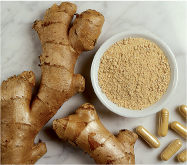
ESSENTIAL OILS FROM A TO Z
LAVENDER
Antibiotic and sedative that helps to fight sinus infections and ailments caused by the common cold such as exhaustion, headaches and earaches. This oil adapts well on all types of skin. To relieve flu or cold symptoms massage on the cheekbones and sinuses.
Safety. Do not use this oil during the first three months of pregnancy. If you have low blood pressure lavender can cause drowsiness.
LEMON HERB
This anti-flu, antiseptic and antibacterial remedy is useful in soothing a sore throat and to lower a fever. It is a strong oil and should be diluted to avoid skin irritation. It blends well with essential oils of basil, cedar, eucalyptus, geranium, lavender, tea tree and rosemary.
Safety. Avoid using around the eyes and sun exposure after applying, because it can cause sunspots on the skin.
Plantain
(Plantago major)
• Parts used. The leaves and flower buds are cultivated at the end of spring.
• Plantain is grown in Europe and Asia. It blends well with chamomile, mint, thyme, sage and eucalyptus.
• Its soothing properties help to clear up respiratory ailments like cough, rough voice, snoring and pulmonary mucus. Gargle plantain to relieve an inflamed mouth or throat. This remedy is used as a syrup, tea or juice extracted from the fresh leaves and tincture.
• Warning. Use under strict medical supervision with children under 12 years of age and during pregnancy and breastfeeding.
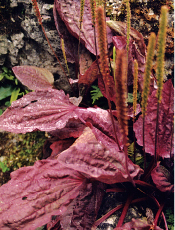
A SOOTHING GARGLE
Boil previously ground plantain leaves, for 10 minutes. Allow to steep, strain and cool. You can use this mixture to gargle up to 3 times a day.
Marsh Mallow
(Althea officinalis
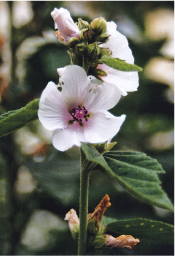
• Parts used. Leaves, flowers and roots. The flowers are collected before they blossom and are used to make soothing syrups.
• This plant, native to the Mediterranean, grows wild in a wide area, stretching from Western Europe to Siberia. Marsh mallow grows best in salty and cold areas.
• With its high content of mucilage, marsh mallow is used as a therapeutic remedy to relieve inflamed airways and for its soothing properties. It is also used externally to fight infected throats, pharyngitis and pulmonary ailments such as cough and bronchitis. It blends well with mullein and liquorice.
SOOTHING AN IRRITATED THROAT
Add a handful of marsh mallow to 4 cups of water and boil for 10 minutes. Allow to steep and strain. Drink 3 times a day, sweetened to taste with honey.
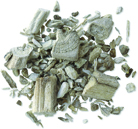
Horehound
(Marrubium vulgare)
• Parts used. The flowers are cultivated when they open and are dried placed on thin canopies.
• This plant, native to Central Asia, carries an aroma similar to apple. Its healing properties are good for fighting respiratory infections.
• Use as a remedy for excess phlegm and cough relief. Take 10 to 20 drops 3 times a day.
• Warning. Do not administer to children unless you consult your doctor. Not recommended during pregnancy or breastfeeding.

ESSENTIAL OILS FROM A TO Z
LIME
Relieves fevers and cold symptoms like irritated and watering eyes, sneezing, cough and sore throat. It has a fresh and slightly sweet citrus aroma.
Safety. It should be used in low concentration; and it's best to avoid direct sun after applying lime.
MA HUANG (EFEDRA)
Anti-spasmodic. In China the branches are used -whole or crushed- to fight the common cold, especially symptoms of chills, headaches, achy body and a strong cough. This essential oil has antibacterial and antiviral properties. It blends well with primavera and thyme as a remedy against serious pulmonary ailments.
Safety. It shouldn't be used with other stimulants, if you are taking anti-depressive drugs or if you suffer from high blood pressure.
TO FIGHT A SLIGHT FEVER
Make an infusion using 1 spoonful of yarrow and blue elderberry in 1 cup of water, allow to steep for 10 minutes and strain. Drink up to 4 cups daily.
Yarrow
(Achillea millefolium)
• Parts used. The flowers and leaves are harvested when blossoming and used to make infusions or teas. Yarrow has a slightly sweet and acidic taste that gives off a refreshing and toning sensation.
• This plant, native to the Mediterranean is today grown throughout Europe, North America and Asia. It has long been used for its anti-cold and anti-flu properties.
• Yarrow is good for its anti-inflammatory properties and for lowering fevers. Drink 3 cups a day.
• Warning. In high doses yarrow can cause dizziness and headaches. It increases the skin's sensitivity to the sun. It shouldn't be used in high doses during pregnancy because it stimulates the uterus.
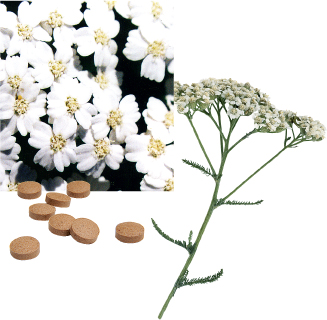
Slippery elm
(Ulmus rubra)
• Parts used. The inner bark is used as a base for slippery elm tablets. It is also used in teas prepared from its powder.
• This tree native to North America has gained popularity in Europe, especially in Spain. Since the 70's the tree has been considered a plague because it has spread so widely that other tree species have not been able to grow in Europe and North America.
• Helps to fight colds and coughs. Native Americans have used the plant to sooth sore throats. It is used in capsules and infusions. It doesn't have any side effects.
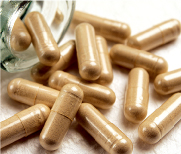
DRINK FOR A COMMON COLD
Mix a pinch of slippery elm bark powder in 1 cup of water and boil for 10 minutes. Allow to steep and strain. Drink cold.

ESSENTIAL OILS FROM A TO Z
MARJORAM
Relieves cold and flu symptoms. It has a pleasant aroma similar to almonds that calms headaches and a congested head caused by strong colds.
Safety. It is not recommended to use marjoram during pregnancy.
MINT
A nasal decongestant that improves breathing when the sinuses are stuffed up. Inhaling a few drops in a vapor solution can help to relieve and sooth discomfort caused by nasal congestion.
Safety. It is not recommended to use mint during pregnancy or breast-feeding, because it decreases the production of breast milk. It's recommended using mint in ointments or mixed with oils in low concentration to avoid skin irritation.
Cayenne
(Capsicum frutescens)
• Parts used. Fruit (fresh peppers) that are prepared in infusions, tinctures, salves and oils. The seeds should be removed because they can be toxic.
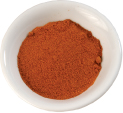
• Cayenne, which is native to India arrived to the West around 1,500 AD. Since then it has been cultivated throughout the world.
• The fruit causes sweating, which can be very good to fight fevers and chills. It is also a good remedy for throat problems like tonsillitis, laryngitis and strep throat.
• Warning. Do not use during pregnancy or breastfeeding. You should not touch your eyes, extremities or wounds with your hands after touching the fleshy inner part of fresh cayenne.
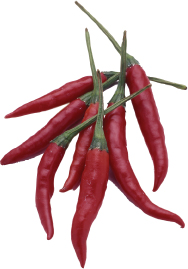
FOR A SORE THROAT
Add ½ spoonful of crushed cayenne to a small bowl of water. Place in a double boiler for 10 minutes. Next, strain and dilute I tablespoon in 1 cup of water. Take small sips to relieve a sore throat brought on by respiratory ailments and the common cold.

Liquorice
(Glycyrhiza glabra
• Parts used: The roots are harvested in the fall and are rich in glycerol, which is 50 times sweeter than sucrose. Tinctures, syrups and candies are made with liquorice.
• Native to the Mediterranean and Central Asia, it has been cultivated in Europe since the 16th Century. In China it is known as “the great detoxifying root”.
• It has strong soothing properties to alleviate pulmonary ailments and bronchitis. It is a great remedy for stomach ulcers.
• Warning. Should not be taken if you have high blood pressure, tumors, hormonal dependencies or diabetes. Do not take if you are taking any potassium depleting drugs.
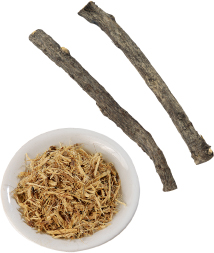
ESSENTIAL OILS FROM A TO Z
MYRRH
Pulmonary antiseptic and antitusive oil used to relieve symptoms related to bronchitis and a wet cough. This oil native to Ethiopia has a warm, sweet and resonating aroma. Myrrh is especially soothing for the lungs, chest pains and coughs. It doesn't have any side effects and can be used on children 2 years old and older.
PINE
Anti-cold and pulmonary anti-septic. Inhaled, it is a very good remedy for respiratory ailments especially if you are suffering from bronchitis, flu or sinus infection.
Safety. It is not recommended to use on children under 6 years old, pregnant women or during breastfeeding. It should not be used on patients with neurological diseases. In general, you should take care in using pine because excessive amounts can cause bronchial spasms.
Blue elderberry
(Sambucus nigra
• Parts used. Fresh flowers, fruits, leaves and bark. The flowers are cultivated in the spring and fall, sun dried and stored in hermetic containers. The bark, cultivated in spring, is prepared as an infusion or used to make tinctures, syrups and creams. The ripe fruit, rich in vitamins A and C, is used to make beverages, served to prevent colds.
• Native to Europe and Asia, it is a shrub that grows in forests and along rivers and streams. In ancient times magic properties were attributed to the plant.

• It is an excellent antidote for respiratory illnesses. The flowers, when prepared in an infusion, induce sweating which helps get rid of the sickness. Blue elderberry relieves coughs that accompany the flu and soothes earaches.
• Warning. The fruit is toxic if not fully ripened.
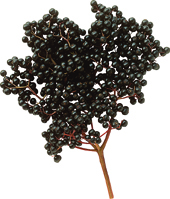
CHILDREN WITH EAR INFECTIONS
Soak a handful of dried blue elderberry leaves in boiling water for 10 minutes.
Wet a cotton ball from the steam released from the decoction and place in the ear. It can help to soothe pain caused by ear infections.
Thyme
(Thymus vulgaris)
• Parts used. The flowering tops and leaves are collected when the plant blossoms to make infusions, tinctures, syrups and oils.
• Thyme has antiseptic and soothing properties. It helps to ease bronchitis and throat and respiratory ailments. The flowers (rich in volatile oil) are a strong antiseptic and stimulate the body's defenses.
• Warning. You should avoid this remedy during pregnancy and if you have high blood pressure.
FOR NASAL CONGESTION
Prepare an infusion with a spoonful of dried thyme in 1 cup with boiling water. Allow to steep, strain and drink hot, up to 3 cups per day. This therapeutic infusion is good forgetting rid of phlegm, mucus and nasal congestion.
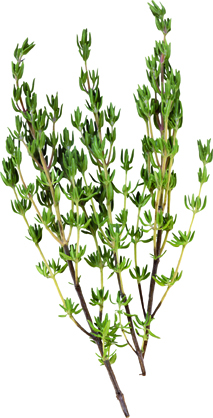
ESSENTIAL OILS FROM A TO Z
RAVENSARA AROMATICA
Strong antibiotic. This essential oil with its refreshing aroma is especially recommended to treat the flu and common cold. The leaves are used to distill the essential oil (6 to 8 drops, applied on the body).
ROSEMARY
Stimulant, pain reliever, antispasmodic, anti-inflammatory and antiviral remedy. It's recommended mixing with mint and eucalyptus to treat respiratory problems and sinus infections.
Safety. Rosemary shouldn't be used if you suffer from epilepsy, high blood pressure or are taking homeopathic treatments. Its use is not recommended ifyou are pregnant, because it stimulates the uterus.
FOR SINUS INFECTIONS
Place 2 to 3 drops of rosemary, mint and eucalyptus in a bowl with boiling water. Inhale the steam for 5 to 10 minutes.

Golden root/rod
(Solidago virga-aurea)
• Parts used. Dried flowers are used to make beverages, syrups and tinctures.
• Native to Europe, Northern Asia, Africa and the Americas. It is also known as the “pagan herb”; it grows well in common gardens and as a wild plant.
• It helps to get rid of dead cells, detoxifying and purifying the body. It also helps to cure respiratory ailments.
• This herb works as an anti-inflammatory, antiseptic, sedative and sweat inducing remedy. It also helps to sooth inflamed mucous membranes.
• Warning. This remedy should not be used on children or during pregnancy and breastfeeding.
CHILDREN'S IMMUNE SYSTEM
To increase children's immune system use ravensara aromatica, an essential oil made with a special neutral vegetable oil that has similar effect but is better for children. Make this remedy by mixing 1 teaspoon of ravensara with 1 tablespoon of hazelnut oil. Use daily (once or twice per day) by massaging the oil on the chest, abdomen, arms and legs. Use about 30 drops of oil for all the areas listed above.

Wild Violet
(Viola odorata)
• Parts used. The flowers, leaves and roots are cultivated in the spring and used in syrups, tinctures and infusions. Wild violet possesses a camphor-like and earthy aroma, similar to wood.
• An herb found in the Himalayas, it was used in Ancient Greece and Rome as a healing remedy.
• The remedy has expectorant properties, ideal to fight coughs, bronchitis and the common cold.
• Warning. In high doses this herb can be toxic and cause vomiting and nausea.
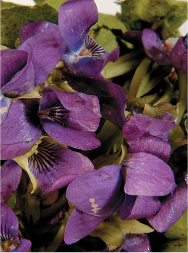
TO HELP GET RID OF PHLEGM
Wild violet roots possess healing properties that help to get rid of mucus. Place 1 spoonful of powder made from this plant's roots with I cup of water, let boil for 5 minutes and strain. Drink 2 or 3 cups per day.
ESSENTIAL OILS FROM A TO Z
SANDALWOOD
Pulmonary antiseptic that helps to soothe chest coughs. With its exotic, sweet and earthy aroma, it blends well with almond and lavender oil. You can mix sandalwood, almond oil, and lavender to make an ointment to treat children with colds and coughs by rubbing the salve on the chest and back.
TEA TREE
Tea tree is antiseptic and has an aroma of fresh wood. Not long ago it was discovered for its effects on respiratory ailments. Tea tree is ideal for fighting any type of infection due to the oil's double action property, which stimulates the immune system. It can be used on children under 2 years of age to help fight cold and flu symptoms.
Safety. It should always be diluted because tea tree can irritate sensitive skin.

Comment about this article, ask questions, or add new information about this topic: